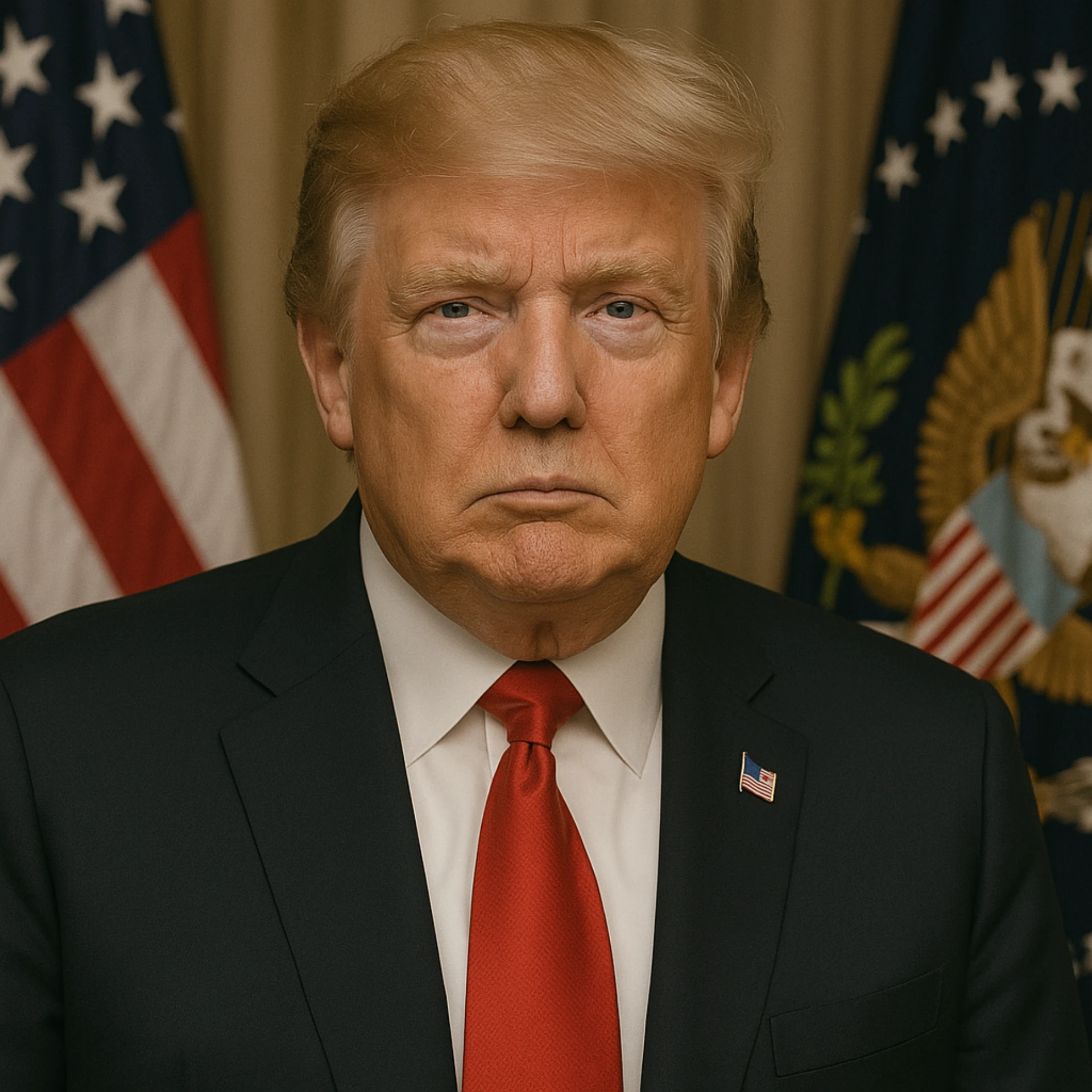1. Introduction
Donald Trump emerged as one of the most polarising yet charismatic figures on the global stage. From his rise as a real estate mogul and reality TV star to his tenure as the 45th President of the United States, Trump’s public persona has been a topic of fascination and critique. His branding highlights a unique leadership style that blends assertiveness, theatrics, and direct communication, which many have found both compelling and divisive.
In leadership and psychology, charisma is often viewed as a double-edged sword. Charismatic leaders like Trump inspire strong loyalty and create a distinctive impression, yet this same magnetism can alienate or polarise audiences. For business professionals, Trump’s approach offers lessons in branding, emotional engagement, and disruption—though it also serves as a cautionary tale where unchecked charisma may overshadow substance and unity. This paper examines Trump’s charismatic attributes, assesses their impact on his brand, and provides actionable insights for business leadership.
2. Trump’s Charismatic Elements
Donald Trump’s charisma is rooted in three key elements: his showmanship, assertiveness, and distinctive use of media, particularly social platforms. These traits have played a pivotal role in his ability to engage audiences and build a loyal following.
2.1. Showmanship and Commanding Attention
Donald Trump has demonstrated an innate ability to capture and retain attention. His reality TV show, The Apprentice, was a masterclass in theatrical leadership, portraying him as a decisive and powerful figure. In the political arena, his rallies drew large and enthusiastic crowds due to a blend of dramatic rhetoric, humour, and controversy. Leadership psychology often links charisma with the ability to appear larger than life—Trump capitalised on this by creating an aura of power and invincibility (Conger & Kanungo, 1987).
His refusal to conform to conventional political norms (such as overly scripted speeches) created an impression of authenticity, further drawing in his audience. Business professionals can take note of how commanding presence and distinct communication styles can make them stand out in competitive environments.
2.2. Assertiveness: Breaking Traditional Norms
Trump’s unapologetic and assertive personality has been central to his appeal. From strong declarations to his frequent use of superlatives such as “the best” or “greatest,” Trump conveyed confidence in his vision and capabilities. This assertiveness, while often criticisable for its excesses, demonstrated an important leadership principle that decision-makers should project conviction during times of uncertainty (Bass & Bass, 2008).
Moreover, Trump’s willingness to disrupt traditional systems—whether in the business world or politics—garnered both admiration and ire. While some saw him as a bold agent of change, others viewed his disregard for tradition as destabilising or reckless.
2.3. Strategic Use of Social Media
Trump’s embrace of Twitter as a primary communication tool was revolutionary. By delivering unfiltered messages directly to his followers, he bypassed traditional media structures. This gave him a platform to amplify his voice, respond to criticism in real time, and connect with supporters on a personal level. According to Kaplan & Haenlein (2010), social media creates unprecedented opportunities for leaders to engage their audiences, and Trump exemplified this by leveraging the medium to create an impression of accessibility and relatability.
However, this unfiltered approach also exposed him to backlash. A lesson for professionals is the importance of balance when using social media: while it can boost visibility and connection, unrestrained use can detract from credibility and alienate stakeholders.
3. Positive Aspects of Trump’s Personal Brand
As a businessman and politician, Trump’s personal brand has undeniable strengths that resonated with fans and supporters. His approach offers several takeaways for professionals looking to cultivate charisma and influence.
3.1. Crafting a Memorable and Impactful Identity
Trump’s “Make America Great Again” slogan became synonymous with his identity, serving as a rallying cry for his followers. In marketing terms, this was a successful branding effort: it was concise, emotionally resonant, and repetitive enough to imprint strongly in the public’s consciousness. Business leaders can emulate this by creating clear, impactful messaging that captures their vision and values.
3.2. Building Loyalty and Emotional Connections
Trump’s ability to connect emotionally with his core audience was both an art and a strategy. He positioned himself as an advocate for the “forgotten” working class, establishing a sense of solidarity with those who felt overlooked by traditional elites. Research shows that leaders who foster emotional connections with their team members or customers inspire more profound loyalty and engagement (Goleman, 1998). Trump demonstrated the value of directly addressing audience pain points while cultivating an “us vs. them” dynamic to reinforce loyalty.
3.3. Disrupting Conventional Norms to Dominate Media Attention
Trump’s unpredictable behaviour consistently disrupted traditional expectations, capturing widespread media coverage. His bold, headline-grabbing statements kept him at the centre of public discourse, an approach business competitors can observe as an alternative to conventional branding strategies. Leaders working in saturated markets can achieve differentiation by strategically breaking norms to attract attention—so long as this disruption is paired with clear and functional goals.
4. Critique of Trump’s Approach
While Trump’s charisma brought him significant achievements, his approach also highlighted potential risks and pitfalls—particularly when a leader’s personal style dominates over collective consensus building or strategic planning.
4.1. Divisive Rhetoric and Public Perception
Trump’s charisma often relied on divisive messaging. While this inspired fierce loyalty among his support base, it alienated many others. For example, his controversial policies regarding immigration and outspoken critiques of perceived enemies provoked polarisation, undermining opportunities for bipartisan collaboration.
Over-reliance on rhetoric that appeals to narrow audiences can be counterproductive for professionals aiming to sustain broad engagement. While targeting specific demographics can be effective in the short term, it risks alienating others in ways that diminish long-term brand equity.
4.2. Challenges of Sustaining Brand Credibility
One of Trump’s significant weaknesses was the perception that his messaging sometimes lacked substance. While charisma can be a powerful draw for followers, leaders who rely heavily on personality risk eroding credibility if results or actions do not align with their vision. For instance, Trump’s handling of the COVID-19 pandemic led many to question the gap between rhetoric and action.
Understanding the balance between bold communication and tangible outcomes is crucial for professionals. Effective leaders consistently back their promises with implementable actions and solutions to preserve integrity.
4.3. Polarisation as a Barrier to Leadership Effectiveness
Charismatic leaders need to unify diverse audiences, but Trump’s leadership often heightened division. A parallel for corporate leaders is workplace inclusivity. Polarising behaviours (even when inadvertently cultivated) can fragment teams, reduce collaboration, and weaken trust. Leaders must evaluate how their personal brand and communication styles affect broader team unity.
5. Lessons for Business Professionals
Trump’s leadership offers valuable lessons for professionals navigating personal branding, communication, and influence:
5.1. Mastering Emotional Engagement
Connecting emotionally with audiences creates deeper trust and loyalty. Leaders should focus on empathetic communication and addressing the needs or fears of their audiences—whether these are customers, employees, or stakeholders.
5.2. Tactful Use of Media
While Trump’s use of social media demonstrated its potential for direct communication, his experience also serves as a cautionary example of overexposure. A strategic, well-curated media approach often outperforms constant visibility, particularly when combined with transparency and clear strategic intent.
5.3. Balancing Charisma with Accountability
Charismatic energy can magnetise teams or clients, but accountability sustains relationships. Professionals must build solid systems and demonstrate competence to complement their passion and charm.
5.4. Leading with Inclusivity
Charisma should not come at the expense of broader connection. Effective leaders find ways to inspire loyalty without division, ensuring engagement across diverse demographics.
6. Conclusion
Donald Trump’s leadership provides a compelling exploration of charisma’s dual nature—a potent force that can inspire loyalty, disrupt norms, and achieve visibility, yet which also risks alienation and division when mishandled. His approach underscores charisma’s potential as both an asset and a liability, with clear implications for business leaders navigating personal branding in modern environments.
For professionals, the key is balance: leveraging charisma to connect authentically with audiences while remaining strategic and accountable. By understanding audience dynamics, fostering inclusivity, and aligning rhetoric with results, leaders can cultivate influence that endures beyond the pitfalls of polarisation.
7. References
- Conger, J. A., & Kanungo, R. N. (1987). Behavioral dimensions of charismatic leadership. Leadership Quarterly, 2(2), 239–256.
- Goleman, D. (1998). What makes a leader? Harvard Business Review, 76(6), 93–102.
- Kaplan, A. M., & Haenlein, M. (2010). Users of the world, unite! The challenges and opportunities of social media. Business Horizons, 53(1), 59–68.
- Bass, B. M., & Bass, R. (2008). The Bass Handbook of Leadership: Theory, Research, and Managerial Applications. Free Press.










